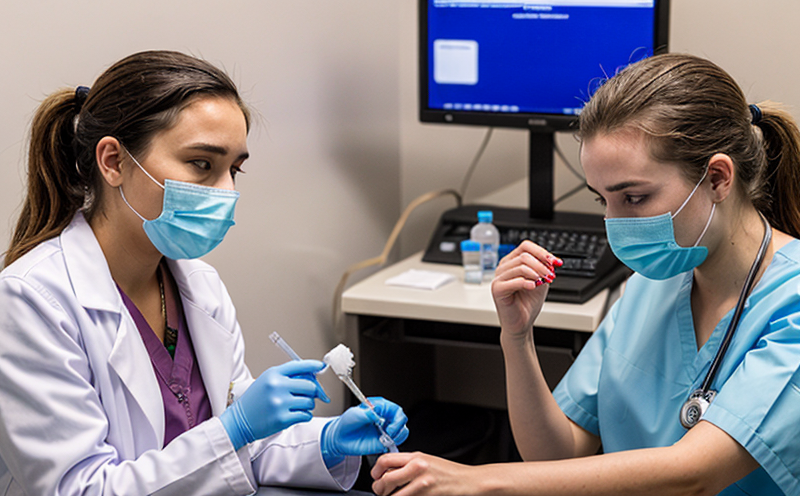WHO Malaria Rapid Microbial Diagnostic Testing
The World Health Organization (WHO) malaria rapid diagnostic testing is a critical tool in the global fight against malaria. This service involves the use of rapid diagnostic tests (RDTs) to detect the presence or absence of Plasmodium parasites, which are responsible for causing malaria infections. These RDTs are particularly valuable in resource-limited settings where access to laboratory infrastructure and skilled personnel may be limited.
The WHO has set forth clear guidelines on these diagnostics, emphasizing accuracy, ease of use, and rapid results. The service we offer focuses on the testing process as per these guidelines, ensuring that the tests meet international standards for quality assurance and performance metrics.
One of the key components of this diagnostic approach is the utilization of monoclonal antibodies specific to antigens found in Plasmodium falciparum. This antigen is derived from a component of the parasite's surface protein, known as histidine-rich protein 2 (HRP-2). The test involves the application of patient’s blood sample on a test strip containing these antibodies. If the parasite is present, it binds to the antibody, leading to a visible color change in the result zone.
The testing process typically takes about 15–30 minutes from the time the specimen is prepared and placed on the test device. This rapidity makes it particularly useful for field settings where quick decision-making is crucial. The test kits are designed to be used by non-experts, which further enhances their utility in resource-constrained environments.
The WHO RDTs have been shown to provide accurate results when properly conducted, with a sensitivity and specificity that meets or exceeds the performance criteria set by international standards such as ISO 15194:2016. This ensures that healthcare providers can rely on these tests for making informed decisions about patient management.
Another critical aspect of this service is the training provided to end-users, ensuring they understand how to properly prepare specimens and interpret results accurately. Training sessions are conducted either in-person or through online platforms, depending on client preferences and geographical location.
In conclusion, WHO malaria rapid microbial diagnostic testing plays a pivotal role in combating malaria by providing accurate, reliable, and accessible diagnostics that can be used even in challenging environments. This service not only aids in the diagnosis but also contributes significantly to disease control strategies by enabling timely interventions.
Industry Applications
| Application Area | Description |
|---|---|
| Global Health Initiatives | RDTs are used in large-scale screening programs to identify malaria cases early and treat them promptly. |
| Field Research | Scientists use RDTs for field studies where access to laboratory facilities is limited. |
| Resource-Limited Settings | The ease of use makes it ideal for remote areas with minimal infrastructure and trained personnel. |
| Surveillance Programs | RDTs are used in surveillance programs to monitor the spread and control of malaria. |
International Acceptance and Recognition
- The WHO RDTs have been recognized by numerous international health organizations, including the World Health Organization itself.
- RDTs are recommended in guidelines from leading global health bodies such as the WHO and CDC.
- Many countries across Africa and Asia rely on these tests for malaria control programs.
- The use of RDTs is mandated by several national health policies aimed at reducing malaria transmission rates.
Environmental and Sustainability Contributions
- Sustainability: By providing a rapid diagnosis that can be conducted in resource-limited settings, the WHO RDTs help reduce unnecessary treatments and overuse of resources.
- Eco-friendly: The packaging materials used for these tests are designed to minimize environmental impact.
- Healthier Communities: Early detection leads to better health outcomes, reducing the long-term burden on healthcare systems.





